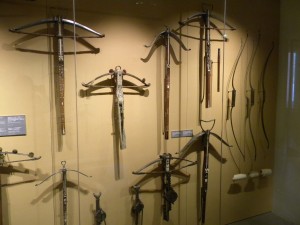So after our trip to the Eiffel Tower, Thing 1 and I tried to find the “Love Bridge” to visit. This is the bridge that has become famous because lovers who come to Paris attach a lock (with their names on it) to the bridge and then throw away the key into the Seine, symbolizing their everlasting love and commitment to each other. I mistakenly thought that the name of the bridge was the Pont de l’Alma. (A “pont” is a bridge.) Hence, Noah and I headed to the Pont de l’Alma, which was not too far of a walk from the Eiffel Tower. However, once we reached the bridge, it was obvious that this was not the bridge we were looking for, and I resigned myself to coming home without a picture of it for my dad, who had also read about it.
So continuing on, we ambled toward our next stop: the Musée de l’Armée. We had lunch before we actually went into the museum. We shared a chicken, cheese, tomato and mayonnaise sandwich, on a baguette, with some salad. (Thing 1 did not eat the salad of course, but he loved the sandwich!)
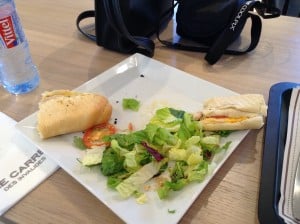
The Musée de l’Armée is an interesting building that contains a chapel as well as the main museum buildings. At one point, its primary purpose was for veterans. There we saw medieval (and later) suits of armor, weapons, and more. Weapons we saw ranged from daggers, to halberds, to swords, pistols, muskets, and cannon. There were even pieces of armor for horses and the young kings of France.
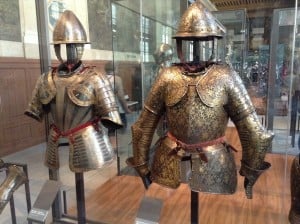
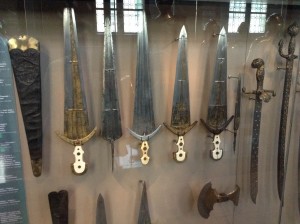
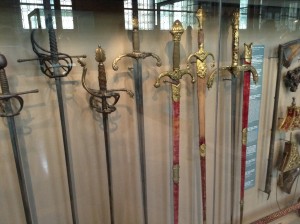
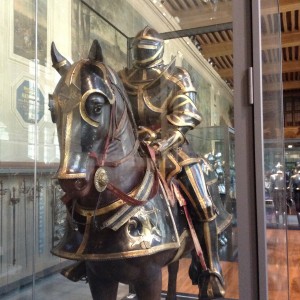
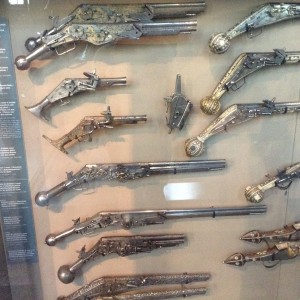
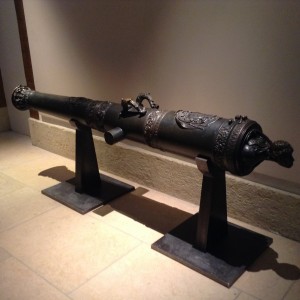
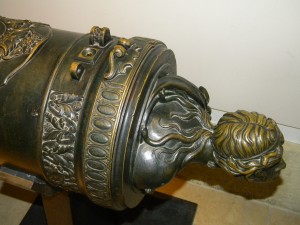
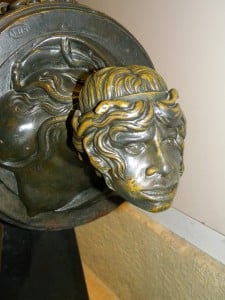
After looking at all of the military realia, we proceeded to the chapel. The chapel is actually divided into two parts: one side was for the veterans and any other non-royals, and the other side was for the royals. The altar, especially on the kingly side, was ornate and gilded. Thing 1 lit a candle in the chapel, which is still used to this day. Then, we went to the other side of the chapel, the royal side, which today is mostly noteworthy because it contains the tomb of Napoléon, revered figure to the French. This is some tomb. His tomb is lower than the entry ground level of the church in a large, circular space. So, one walks into the chapel, and then is able to gaze down upon a massive sarcophagus in the center of the space. It is possible to descend down into that space through steps that are behind the altar and crucifix in the chapel.
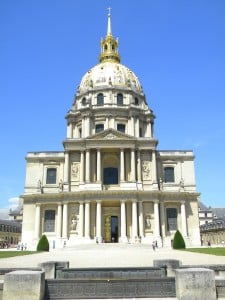
Napoléon, like many Egyptian pharoahs were, is actually contained within succesive coffins which were then all placed into the sarcophagus. It is massive. It is not possible to touch it because of a marble balustrade that keeps visitors from approaching too closely. Lining the walls of the space are twelve different sculpted reliefs, each depicting Napoléon at the center and illustrating the great things that he accomplished during his reign (reform of laws, etc.). Directly opposite the altar, within the space is a chaplet or niche, containing a huge statue of Napoléon, accented with gold leaf.
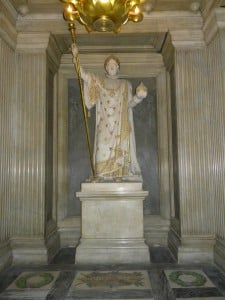
The statue in the niche, and his tomb are directly centered in the chapel and are in a straight line with the altar with Jesus on it,
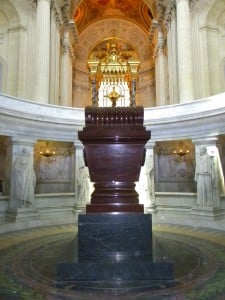
showing all the importance of Napoléon to France. His sarcophagus is also located directly under the embellished dome of the church,
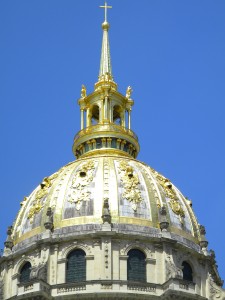
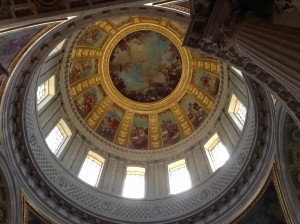
the roof of which is covered in gold leaf and conspicuously visible from the Eiffel Tower and the Arc de Triomphe. The church also contains the tombs of other great military figures in French history.
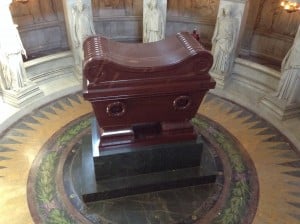
Thing 1 and I were tired, though, from walking around, so we made our way back to the hotel. We planned to take a nap before heading to the Musée d’Orsay, which was open late on Thursday nights until 9:45. Even though Thing 1 wanted to play games on his iPad, I made him take a nap; we both fell deeply asleep and were completely surprised when the alarm went off an hour and a half later. Thing 1 woke up grumpy. I bribed him a bit — because let’s be honest, he wasn’t exactly looking forward to looking at art all evening — by telling him I’d take him to a KFC up the street from our hotel. That got him out of bed and moving and off we went.
When we arrived at the museum, I was surprised to see how many people were there at nearly 8 p.m. at night. The museum is located in a converted train station, and has a very light, open feel to it. Thing 1 and I saw works by Seurat, one of my favorites. We sat and people-watched for a bit, too. I could tell Thing 1 wasn’t into it as much, though, so we set off to come home. That’s when we ran into trouble again on the RER C line. Ugh! (Thing 1 and I came to hate that line.) So we made our way down to the train, only to discover that none of the trains were running. There was something wrong. We waited about 5 minutes to see if they started up again, but it was kinda miserable waiting. It was so hot, and we were starting to sweat. Finally, we decided to give up, find a Métro line nearby, and work our way back to our hotel avoiding any RER lines. I wanted to get back to the hotel before dark (which is nearly 10 p.m. in Paris). We finally made it. Bedtime for us — it had been an eventful, but fun day!
